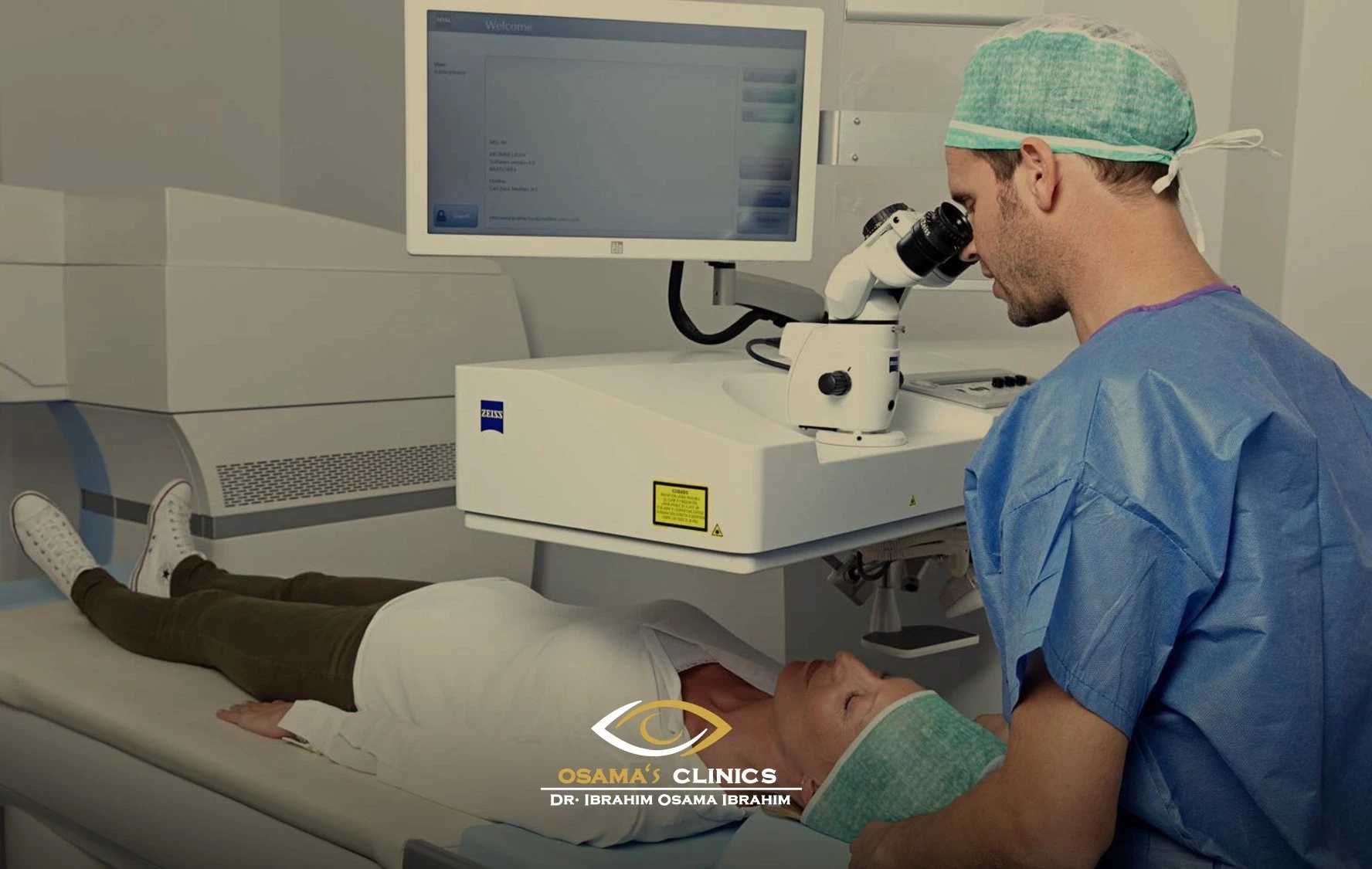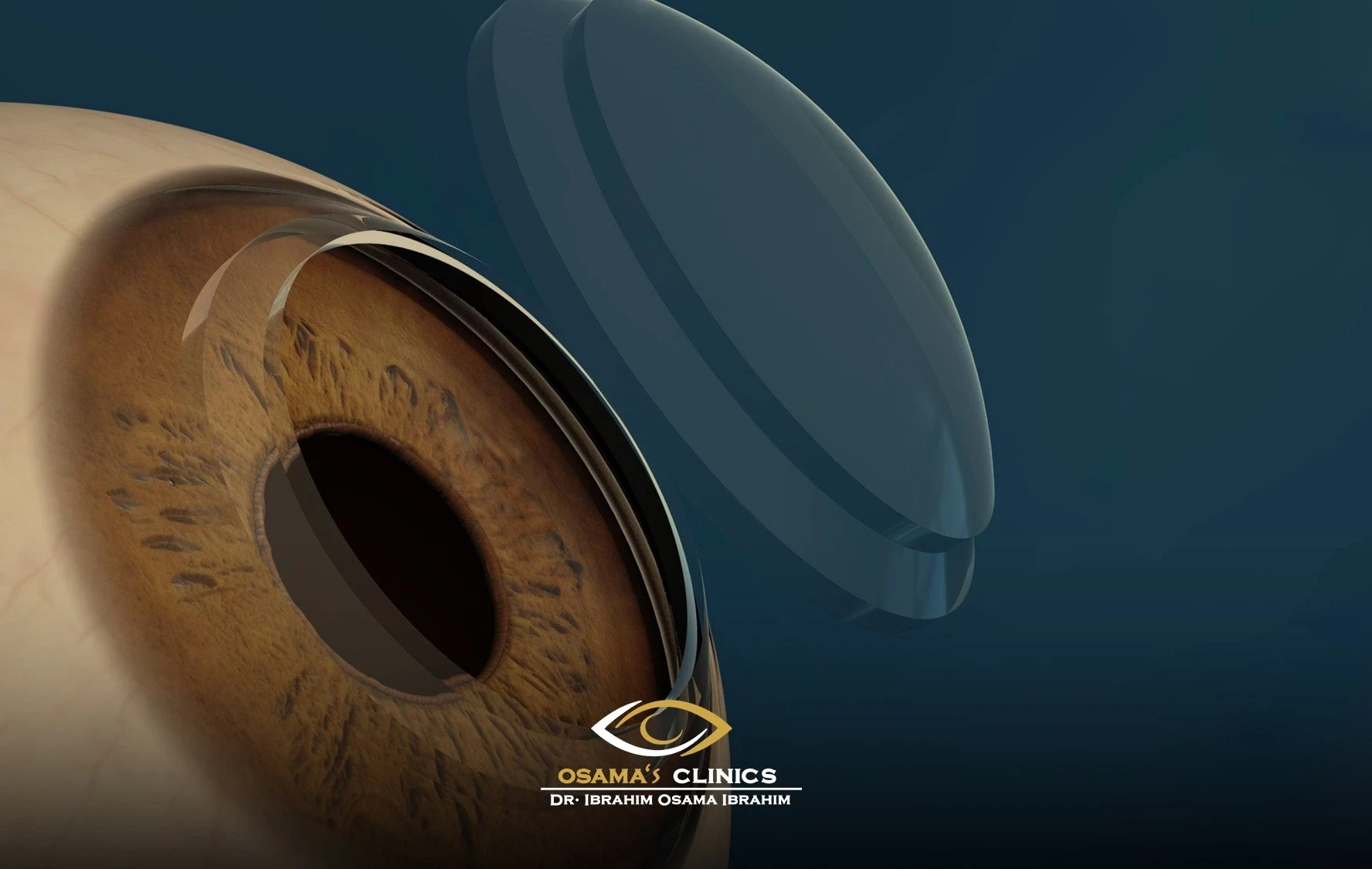
The difference between femto-LASIK and LASIK
Techniques for correcting vision defects have varied in the recent period, especially with the development of safer techniques that provide alternative solutions for those who suffer from thinness of the cornea, for example, and wish to correct various visual defects such as farsightedness, myopia, or astigmatism, and among the modern and effective techniques in achieving this we find a technique LASIK and femto-LASIK.
What is the difference between femto-LASIK and LASIK to correct vision defects? This is what Dr. Ibrahim Osama - a consultant ophthalmologist, a member of the Egyptian Ophthalmic Society, and a member of the European Society for Cataract Surgery and Laser Vision Correction - will tell us about in this article.
The difference between femto-LASIK and LASIK to correct vision defects
In order to be able to identify the difference between femto-LASIK and LASIK to correct vision defects, we have to explain the nature of each procedure, the steps, the advantages, and the disadvantages.
First, what is femto-LASIK?
Femto-LASIK is a laser vision correction procedure that uses femtosecond technology. This technique differs from traditional LASIK in that it uses a high-frequency laser and a pulsed laser to vaporize and remove corneal tissue more accurately.
Femto-LASIK procedure steps
The steps to perform the femto-LASIK surgery to correct vision are as follows:
The procedure begins with a visit to the specialist ophthalmologist, a comprehensive eye examination to determine if the patient is eligible for the procedure, and to determine the type and degree of the refractive defect in the eye.
Before the operation begins, anesthetic drops are placed on the eye to numb it, and relieve any feeling of pain during the procedure.
The surgeon uses a femtolaser to create a thin piece of the cornea, to obtain a specific thickness and the correct shape with which the refractive defect can be corrected.
After creating the thin piece in the cornea, the surgeon operates the excimer laser to vaporize a portion of the cornea and shape it into the correct shape to correct the refractive defect.
After vaporizing the selected part of the cornea, it is reshaped to achieve the desired correction of the refractive defect.
After the refractive defect has been corrected, the thin piece created in the first step is repositioned close to where it was removed.
After the operation is over, the eye condition is monitored and the doctor follows the development of improvement over the next few days of the procedure.
Advantages of femto-LASIK
As long as we are talking about the difference between femto-LASIK and LASIK, we have to clarify the advantages of each procedure. The advantages of femto-LASIK are:
Higher precision due to the use of femtosecond technology, which makes the corneal tissue removal process more precise.
Best for people with dry eyes, since it reduces the use of heat lasers.
More effective in correcting some advanced visual defects.
Painless and does not require general anesthesia.
You need a short time to recover after the operation.
Disadvantages of femto-LASIK
As for the disadvantages of this procedure, as long as we are talking about the difference between femto-LASIK and LASIK, they are:
More expensive than traditional LASIK due to the advanced techniques it uses.
Some patients may experience an increase in the difference between daytime and night vision after the procedure.
Photosensitivity syndrome a few days after the operation, and it can be treated with cortisone drops, and then disappears after that.
Seeing multiple colors after the operation in what is known as a rainbow glow, but it disappears after that.
Accumulation of air bubbles on the cornea, but this is rare.
Femto-LASIK success rate
Femto-LASIK is generally considered a successful operation, and the success rate depends on the individual case of each patient. The success rate may reach about 98% or higher for partial or complete vision correction.
Femto-LASIK prices
Femto-LASIK prices vary according to clinics, medical facilities, and place of residence. However, the average cost of undergoing a vision correction procedure via femto-LASIK ranges between 10,000 to 20,000 Egyptian pounds for both eyes. The cost of femto-LASIK can be higher than traditional LASIK, and this is one of the aspects of the difference between femto-LASIK. LASIK and LASIK.
Second, LASIK
In continuation of our talk about the difference between femto-LASIK and LASIK, we move on to learn about LASIK technology, which is one of the most common and most used techniques for correcting vision defects.
LASIK is a type of corrective eye surgery that uses a laser to reshape the cornea, the clear front layer of the eye. LASIK can help correct nearsightedness, farsightedness, and astigmatism, a condition in which the eye is unable to focus on near or far objects accurately.
LASIK procedure steps
In order for the difference between femto-LASIK and LASIK to be completely clear, we have to clarify the steps of the LASIK process, which are:
The procedure begins with a visit to the specialist ophthalmologist, to conduct a comprehensive eye examination and determine if the patient is eligible for LASIK.
Determine the type and degree of refractive defect to determine the possibility of correction.
Before the operation begins, anesthetic drops are placed on the eye to numb it and reduce any pain during the procedure.
The doctor removes a thin and precise layer from the outer layer of the cornea using some surgical tools (microquetatom).
An excimer laser is used to vaporize a precise part of the cornea based on previous measurements and depending on the type of refractive defect.
The laser vaporizes the tissue precisely without causing any damage to the surrounding tissue.
The cornea is reshaped to become more symmetrical and reflect the desired refractive difference.
The removed layer of the cornea is repositioned in its normal position, and no suturing is often required.
After the operation, the condition of the eye is monitored and improvement is evaluated over the next few days.
The LASIK procedure usually takes about 15 minutes for each eye. After the surgery, you may feel some pain and sensitivity to light, but it gradually decreases.
Advantages of LASIK
LASIK is a common and effective vision correction procedure, and it has a number of advantages:
Eliminate the need to wear glasses or contact lenses.
Improved vision






